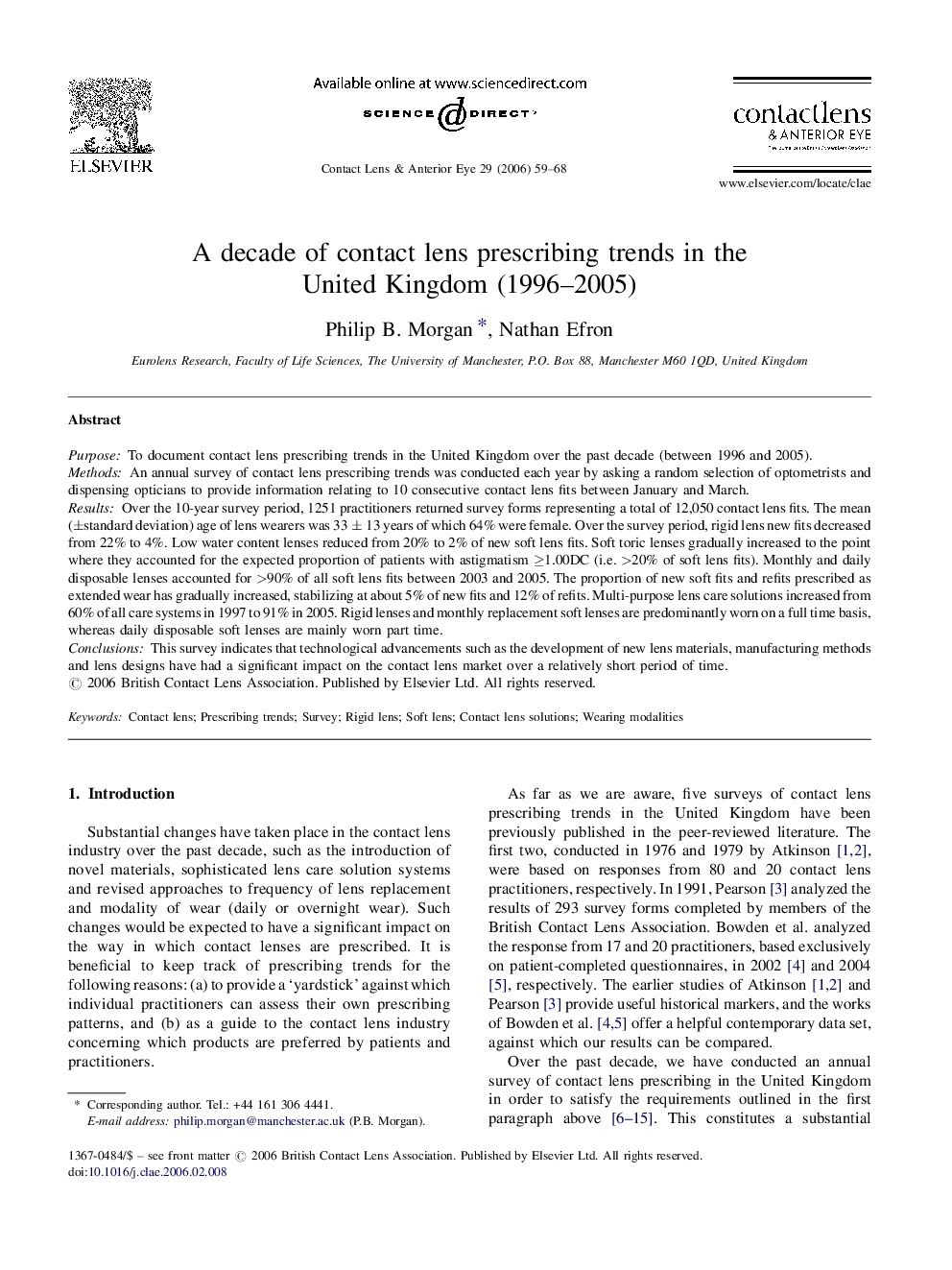| Article ID | Journal | Published Year | Pages | File Type |
|---|---|---|---|---|
| 2697396 | Contact Lens and Anterior Eye | 2006 | 10 Pages |
PurposeTo document contact lens prescribing trends in the United Kingdom over the past decade (between 1996 and 2005).MethodsAn annual survey of contact lens prescribing trends was conducted each year by asking a random selection of optometrists and dispensing opticians to provide information relating to 10 consecutive contact lens fits between January and March.ResultsOver the 10-year survey period, 1251 practitioners returned survey forms representing a total of 12,050 contact lens fits. The mean (±standard deviation) age of lens wearers was 33 ± 13 years of which 64% were female. Over the survey period, rigid lens new fits decreased from 22% to 4%. Low water content lenses reduced from 20% to 2% of new soft lens fits. Soft toric lenses gradually increased to the point where they accounted for the expected proportion of patients with astigmatism ≥1.00DC (i.e. >20% of soft lens fits). Monthly and daily disposable lenses accounted for >90% of all soft lens fits between 2003 and 2005. The proportion of new soft fits and refits prescribed as extended wear has gradually increased, stabilizing at about 5% of new fits and 12% of refits. Multi-purpose lens care solutions increased from 60% of all care systems in 1997 to 91% in 2005. Rigid lenses and monthly replacement soft lenses are predominantly worn on a full time basis, whereas daily disposable soft lenses are mainly worn part time.ConclusionsThis survey indicates that technological advancements such as the development of new lens materials, manufacturing methods and lens designs have had a significant impact on the contact lens market over a relatively short period of time.
